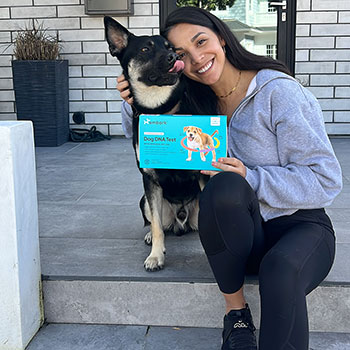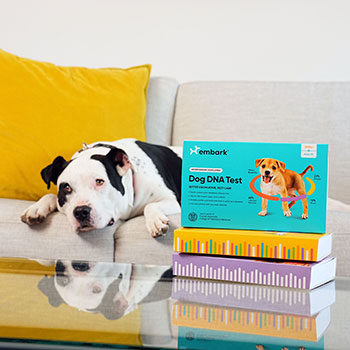Animal Radio for August 2, 2025
Answers to Questions Every Grieving Pet Owner Has
Sonya Fitzpatrick, There Are No Sad Dogs In Heaven
 World-renowned communicator Sonya Fitzpatrick is our guest. She'll be answering the questions pet owners have after their pets have passed on. Alan is skeptical, but that may change before the end of the show! World-renowned communicator Sonya Fitzpatrick is our guest. She'll be answering the questions pet owners have after their pets have passed on. Alan is skeptical, but that may change before the end of the show!
When people ask Sonya Fitzpatrick to communicate with a living animal companion, it's usually because they wish their pet could talk. But the vast majority of calls that Sonya receives are from people whose pet has died.
When we lose our beloved animals, its like losing one of our children. It's the hardest thing any of us with animals have to face. We wonder where they are and desperately want to know if they know how much we loved and will miss them. As much as we wanted to talk to them when they were alive, we wish even more that we could talk to them after they've passed.
In her book, There Are No Sad Dogs In Heaven, Sonya Fitzpatrick addresses the questions that pet owners have after their pets have passed on. Sonya hears frequently the phrase, "I haven't said goodbye to my animal." Sonya explains that there aren't any goodbyes, because animals have an energy body just as we do, and they are around us, and with us all of the time. Some people even hear their animal running down the hallway or physically feel their cat jumping on the bed. Then there are those fortunate enough to see their animals that have passed. There really is no separation; it's just that we miss that physical body so much when we are still in our physical form.
Sonya has talked to many animals, and we get her to talk to Alan's dog Rudy. Tune in to find out what Alan's dog says about him and to see if Alan becomes a believer.
Growing up on a farm in England, Sonya Fitzpatrick realized at an early age that she had a very special connection with animals. Her extensive work helping animals handle adversity has distinguished her as an expert in the field of animal communication. Sonya's passion for animals and her understanding of the critical role they play in our lives provides a unique perspective on the way we need to interact with all of the animals in our world.
Visit Website
We Find Out "Who's Your Daddy?"
Dr. Jenna Dockweiler, Embark DNA Test
 Have you ever wondered what breed your dog is? Of course you love them, whatever breed they are. And surprisingly, a lot of the mutts are some of the healthiest animals around. But Judy still wanted to know exactly what breed Pixel, the Animal Radio Studio Stunt Dog is. Pixel wasn’t selected by breed, she was picked by her personality.
So we contacted Embark, who makes a DNA breed test and they sent us one of these tests.
We did the test last week. It's a swab that we rubbed around Pixel's mouth and sent it in and we got the results back. We were all really surprised. To us, Pixel looks like a Chihuahua with a little Jack Russell Terrier. Also, anytime we take her out, everybody guesses Jack Russell or Rat Terrier. When she runs, she looks sort of like a Whippet or a Greyhound. Then they guess Whippet.
So that's why we decided to go ahead and do the test. And we not only got the breed results back, but we also found out about her siblings.
We welcome back to the show Dr. Jenna Dockeiler, vet geneticist and animal theriogenologist, which is the study of animal reproduction.
So what are the results for Pixel?
Dr. Dockweiler explains that Miss Pixel is a very interesting mix of breeds. We were dead on with Chihuahua, as she is 39.3-percent Chihuahua. Next she is 11.5-percent Cocker Spaniel, which we can’t see. She's 11.2-percent Poodle, 9.8-percent Yorkshire Terrier, 8.9-percent Miniature Schnauzer, 6.1-percent Shih Tzu, and 13.2-percent Super Mutt, which means that far back in her lineage, there's been a lot of dog breed mixing going on. So we can't confidently assign that percentage to any one breed. The Super Mutt comes in second as far as dominance. Is it possible to know what breeds are in a Super Mutt? Unfortunately, we can't tell for sure. Have you ever wondered what breed your dog is? Of course you love them, whatever breed they are. And surprisingly, a lot of the mutts are some of the healthiest animals around. But Judy still wanted to know exactly what breed Pixel, the Animal Radio Studio Stunt Dog is. Pixel wasn’t selected by breed, she was picked by her personality.
So we contacted Embark, who makes a DNA breed test and they sent us one of these tests.
We did the test last week. It's a swab that we rubbed around Pixel's mouth and sent it in and we got the results back. We were all really surprised. To us, Pixel looks like a Chihuahua with a little Jack Russell Terrier. Also, anytime we take her out, everybody guesses Jack Russell or Rat Terrier. When she runs, she looks sort of like a Whippet or a Greyhound. Then they guess Whippet.
So that's why we decided to go ahead and do the test. And we not only got the breed results back, but we also found out about her siblings.
We welcome back to the show Dr. Jenna Dockeiler, vet geneticist and animal theriogenologist, which is the study of animal reproduction.
So what are the results for Pixel?
Dr. Dockweiler explains that Miss Pixel is a very interesting mix of breeds. We were dead on with Chihuahua, as she is 39.3-percent Chihuahua. Next she is 11.5-percent Cocker Spaniel, which we can’t see. She's 11.2-percent Poodle, 9.8-percent Yorkshire Terrier, 8.9-percent Miniature Schnauzer, 6.1-percent Shih Tzu, and 13.2-percent Super Mutt, which means that far back in her lineage, there's been a lot of dog breed mixing going on. So we can't confidently assign that percentage to any one breed. The Super Mutt comes in second as far as dominance. Is it possible to know what breeds are in a Super Mutt? Unfortunately, we can't tell for sure.
 The way that a DNA test works is they are looking at very long stretches of DNA that are common between Pixel and their reference population of purebred dogs. So when they see a lot of mixing that happened in the past, sometimes those segments get too short to really confidently assign to any one breed.
But if you look into that Super Mutt percentage, you'll actually see that they are gonna give you their best guess. So in Pixel’s Super Mutt percentage, their best guess, which are trace breeds that may be present in her ancestry, would be the Australian Cattle Dog, the German Shepherd Dog, and the American Pit Bull Terrier. Which seems so weird, as she’s only about 18 pounds. It’s very hard to picture those breeds in her.
When we originally did the Embark DNA Test for Pixel, we did not send in any pictures. We did not give them any description whatsoever. With some of the other brands, they actually ask for pictures and a description and what we think they are, which doesn’t seem like you would get a fair evaluation. But with the Embark DNA Test, we did not send in any pictures nor gave any descriptions.
Besides telling us her breeds, what traits were they able to find? Dr. Jenna Dockweiler says that based on looking at Pixel's traits, she can tell us that Pixel is likely on the small side. So their estimated weight for her is 22 pounds, which sounds like it's pretty close to what she actually weighs.
They said she likely has short hair along with a lot of white spotting. The colored areas on her coat are likely like a dark blue in color and she likely has tan points, which would be on the eyebrows, sometimes on the toes you'll see that tan, or on the inside of the ears. This was amazing, as this describes Pixel perfectly, all without them seeing any photos.
Besides the breed, they also provide some health information. For Pixel, the great news is she only has one health marker that we need to be aware of, and that's for alanine aminotransferase, or ALT, activity. This is actually not a disease. It doesn't predispose her to any disease. This is just something that's good for her veterinarian to know. So dogs with this result will have a low baseline alanine aminotransferase, or ALT, level on blood work. So that's a liver enzyme that veterinarians use to monitor liver health.
Hal said what he was really surprised about, and which made the hair on his arm stand up, was the fact that not only did they tell us what breed she was, but they told us who her siblings were, and where they lived. They even allowed us to message the siblings, or the siblings' guardians.
Because Pixel was a rescue, we really didn’t know much about her family. Embark DNA was able to find a mother listed for Pixel. Pixel’s siblings and parent offspring do share a similar amount of DNA, usually about 50-percent. But the pattern of how that's shared is gonna be different between siblings and parent offspring. Embark DNA was able to determine that Pixel's mom is named Belle, which is so great.
How does this work? Does that mean that Belle's mom did the Embark DNA test, or does that mean that a test was done somewhere else and was pulled from a big database? They were all Embark DNA tested dogs. So all of these are dogs within their database have opted in to RelativeFinder.
Have you ever wondered what kind of breed your dog is? Then what are you waiting for! You can order an Embark DNA test online at EmbarkVet.com. It costs $199 for a full breed and health test. That includes over 350 breeds and varieties, over 200 health conditions and physical traits, as well as some other fun things like relative finder, where you can find other dogs related to yours. And, if you put in the promo code "AnimalRadio," you can get $10 off.
Visit Website The way that a DNA test works is they are looking at very long stretches of DNA that are common between Pixel and their reference population of purebred dogs. So when they see a lot of mixing that happened in the past, sometimes those segments get too short to really confidently assign to any one breed.
But if you look into that Super Mutt percentage, you'll actually see that they are gonna give you their best guess. So in Pixel’s Super Mutt percentage, their best guess, which are trace breeds that may be present in her ancestry, would be the Australian Cattle Dog, the German Shepherd Dog, and the American Pit Bull Terrier. Which seems so weird, as she’s only about 18 pounds. It’s very hard to picture those breeds in her.
When we originally did the Embark DNA Test for Pixel, we did not send in any pictures. We did not give them any description whatsoever. With some of the other brands, they actually ask for pictures and a description and what we think they are, which doesn’t seem like you would get a fair evaluation. But with the Embark DNA Test, we did not send in any pictures nor gave any descriptions.
Besides telling us her breeds, what traits were they able to find? Dr. Jenna Dockweiler says that based on looking at Pixel's traits, she can tell us that Pixel is likely on the small side. So their estimated weight for her is 22 pounds, which sounds like it's pretty close to what she actually weighs.
They said she likely has short hair along with a lot of white spotting. The colored areas on her coat are likely like a dark blue in color and she likely has tan points, which would be on the eyebrows, sometimes on the toes you'll see that tan, or on the inside of the ears. This was amazing, as this describes Pixel perfectly, all without them seeing any photos.
Besides the breed, they also provide some health information. For Pixel, the great news is she only has one health marker that we need to be aware of, and that's for alanine aminotransferase, or ALT, activity. This is actually not a disease. It doesn't predispose her to any disease. This is just something that's good for her veterinarian to know. So dogs with this result will have a low baseline alanine aminotransferase, or ALT, level on blood work. So that's a liver enzyme that veterinarians use to monitor liver health.
Hal said what he was really surprised about, and which made the hair on his arm stand up, was the fact that not only did they tell us what breed she was, but they told us who her siblings were, and where they lived. They even allowed us to message the siblings, or the siblings' guardians.
Because Pixel was a rescue, we really didn’t know much about her family. Embark DNA was able to find a mother listed for Pixel. Pixel’s siblings and parent offspring do share a similar amount of DNA, usually about 50-percent. But the pattern of how that's shared is gonna be different between siblings and parent offspring. Embark DNA was able to determine that Pixel's mom is named Belle, which is so great.
How does this work? Does that mean that Belle's mom did the Embark DNA test, or does that mean that a test was done somewhere else and was pulled from a big database? They were all Embark DNA tested dogs. So all of these are dogs within their database have opted in to RelativeFinder.
Have you ever wondered what kind of breed your dog is? Then what are you waiting for! You can order an Embark DNA test online at EmbarkVet.com. It costs $199 for a full breed and health test. That includes over 350 breeds and varieties, over 200 health conditions and physical traits, as well as some other fun things like relative finder, where you can find other dogs related to yours. And, if you put in the promo code "AnimalRadio," you can get $10 off.
Visit Website
"Where's the iPad Honey?"
Anna Jane Grossman, School For The Dogs
 Anna Jane Grossman, who ran School For The Dogs with dog training partner Kate Senisi, trained her own dog, Amos, on her iPad, and segued into teaching budding canine techies how to use the popular Apple device. Anna Jane Grossman, who ran School For The Dogs with dog training partner Kate Senisi, trained her own dog, Amos, on her iPad, and segued into teaching budding canine techies how to use the popular Apple device.
Years ago, Anna read an article on a girl who was teaching her dog to use an iPad. While the article was a spoof and wasn't true, Anna thought that she could teach her dog, which she did successfully.
She then started giving private lessons to about 25 dog owners and their pets through her Manhattan-based training center.
Anna states that at her School For The Dogs, one of the first things they showed to all dog owners was how to teach their dogs to touch their hand. A simple hand touch is a targeting exercise. This is both good for people to figure out how to teach their dogs something new, as well as focusing a dog's attention.
Once you had a good hand touch, Anna moved the teaching on to objects, like getting their dog to touch the end of a stick. She was even able to get the dogs to touch their nose to an object that a lot of people have in their back pockets, which is their iPhone or iPad. It was a little bit more exciting than getting a dog to touch, say, the end of a fly swatter! And when they touched their nose to the screen, something could actually happen.
One app that Anna used had a big YES and a big NO button, or you could switch them out to be a black or white button, even right of left buttons. This was a fun app, because you could pretend they were actually answering your questions. It also taught the dogs to differentiate between say, black or white or left or right.
Are these apps practical and useful? Well, you could sync up with household items like a lamp. You could then teach your dog to touch the buttons, which would turn the lamp on or off. However, most apps aren't currently made to be used with dog noses.
 When asked what was the purpose of all of this, Anna replied what is the purpose of teaching our dogs to shake or play dead? A lot of the stuff we teach our dogs isn't necessarily purposeful, but it is fun for the humans and fun for the dogs. The more things that you teach your animal, whether or not they're silly, the better they are going to be at learning and figuring out what it is that you want them to do, which can be useful if you want them to stop barking at the mailman or walk by your side on a hike. When asked what was the purpose of all of this, Anna replied what is the purpose of teaching our dogs to shake or play dead? A lot of the stuff we teach our dogs isn't necessarily purposeful, but it is fun for the humans and fun for the dogs. The more things that you teach your animal, whether or not they're silly, the better they are going to be at learning and figuring out what it is that you want them to do, which can be useful if you want them to stop barking at the mailman or walk by your side on a hike.
Before you start working with your dog and your iPad, make sure that it is in a protective case or has a screen protector cover on it. Or, give your old version to your dog when you update to a new device. Some dogs like to chew on electronic devices, and this may help them because you are giving your dog an appropriate way to interact with electronic devices and not to destroy them.
Will these devises now cause our dogs to become couch potatoes? Anna thinks just the opposite. These are not apps that your dog can do on his own, but a way for you to play and interact with your dog together.
Anna lives in Manhattan and says when you live in New York City, you probably live in a small space and you can't go out necessarily and play fetch with your dog for hours on end. You probably also don't have a lot of time. However, you can teach your dog to use an iPad in a very small space while sitting on your couch in front of the TV with a glass of wine.
For over a decade, School For The Dogs, located in the heart of Manhattan's East Village, was home to the city's finest trainers, smartest dog owners, and goodest dogs. Now, a new dog training center, Revival Dog Training, has taken over their East Village storefront.
Visit Website
It's Not Doggie Asthma - It's a Reverse Sneeze - Dr. Debbie
 What dog owner hasn't heard that frightening sound that dogs make - part cough, part sneeze and often described as a dog being unable to catch his breath. But it really isn't asthma, or some kind of bone stuck in your dog's throat - it's a reverse sneeze. So before you panic and run into the veterinary office on emergency, ensure you know what a reverse sneeze is. What dog owner hasn't heard that frightening sound that dogs make - part cough, part sneeze and often described as a dog being unable to catch his breath. But it really isn't asthma, or some kind of bone stuck in your dog's throat - it's a reverse sneeze. So before you panic and run into the veterinary office on emergency, ensure you know what a reverse sneeze is.
Meet the Reverse Sneeze
A reverse sneeze is a respiratory sound in a category all its own. Also known as a pharyngeal gag reflex or backwards sneeze, the reverse sneeze is a commonly observed respiratory sound in dogs and less commonly in cats. While a true sneeze occurs on the exhale, the reverse sneeze occurs as the dog inhales. The result is a reverberating snorting, wheezing, episodic sound that lasts for a few seconds to a minute or two. A reverse sneeze is a completely harmless sound and dogs do not suffer any immediate health threat from these episodes.
How can you tell it's a reverse sneeze?
There is no easy explanation of the sound - you just have to hear it and you'll recognize it. Click to see and hear an example of a dog's reverse sneeze episode.
Part of my enjoyment on the weekly national radio program, Animal Radio, is describing the peculiar smells, sounds and essences of veterinary medicine with our listeners. On many an occasion when speaking to callers, I have re-created the sounds of reverse sneezing. I'm no Rich Little, but I do take pride in my impersonation of a canine reverse sneeze, which is admittedly better in person with the visuals to complement the throaty sound.
Characteristics of a dog displaying a reverse sneeze include:
- Vibrational coughing/wheezing sound
- Stiff, extended neck
- Facial grimace
- No discharge from nose
- Not followed by coughing or vomiting up material
- Not involving collapse episodes
- Animal is completely normal after event
 What causes a reverse sneeze? What causes a reverse sneeze?
Some reverse sneeze episodes occur when a dog gets very excited or pulls against a leash. Brachycephalic breeds (short faced breeds) like Pugs and Boston terriers commonly display reverse sneezing due to their upper airway conformation.
Allergies, respiratory infections, nasal mites, inhaled foreign bodies and masses can also trigger reverse sneezing. Dogs with inflammatory conditions such as lymphoplasmacytic rhinitis can also display bouts of reverse sneezing. And sometimes reverse sneezing occurs in the wee hours of the night, while a dog is sleeping, for no apparent reason. In fact, many veterinarians receive panicked phone calls at 2am from pet owners, concerned of impending asthma attacks or respiratory arrest, only to have it turn out just to be a typical case of reverse sneezing.
What to Do?
There is no required treatment for a reverse sneeze episode. However, I recommend stroking a dog's throat while gently speaking to him in a calm manner until the episode subsides. Some advocate closing/pinching the nostrils off, which forces a dog to swallow and curtails the reverse sneeze episode. Whatever the approach, reverse sneezing episodes are over within minutes, so no emergency treatment is indicated. Antihistamines may be prescribed to minimize reverse sneezing episodes.
When to Worry?
If all of a sudden your dog is having repeated bouts of reverse sneezing, evaluation by your veterinarian is indicated. Consult with your veterinarian if your dog is reverse sneezing along with other symptoms such as facial rubbing, nasal bleeding, nasal discharge, coughing, or significant sneezing episodes.
Nasal mites are a common cause of reverse sneezing and may be noted after a recent boarding visit, especially if multiple dogs in a household are involved. Nasal mite treatment is easily pursued with anti-parasite injections of ivermectin (or in collie breeds - the alternative Milbemycin). If reverse sneezing is excessive and prolonged, the nasal and pharyngeal areas should be evaluated by a veterinarian through rhinoscopy - a procedure performed under anesthesia in which the nasal passages and pharyngeal areas are visualized with an endoscope, a micro camera. This is how foreign objects and masses are typically identified. In other cases, further tests may be needed including a CT scan or with biopsy samples from sinus passages.
Final Thought
The good news is that most of reverse sneezing episodes are harmless, and do not indicate any serious illness. Arm yourself with information by learning what a reverse sneeze looks like and you may save yourself an unwanted emergency veterinary visit over this peculiar but non-life threatening occurrence.
Featured veterinarian known as "Dr. Debbie" on national pet radio program, Animal Radio. Ebook author of "Yorkshire Terriers: How to Be Your Dog's Best Friend"; "Pugs: How to Be Your Dog's Best Friend"; "Mini Schnauzers: How to Be Your Dog's Best Friend"; and "Shih Tzu: How to Be Your Dog's Best Friend." Dr. Debbie's books.
Visit Website
Animal Radio News with Stacey Cohen
 Sperm Bank For Endangered Animals Sperm Bank For Endangered Animals
Japanese scientists launched a sperm bank for endangered animals that uses freeze-drying technology they hope could one day help humans recreate animal populations on other planets. The team at Kyoto University's Institute of Laboratory Animals Graduate School of Medicine preserved sperm taken from two endangered primates and a type of giraffe. They mixed the sperm with special preservation liquid and freeze-dried it in a way that allowed them to store it at just 4 degrees Celsius. The temperature was much higher, and less energy intensive, than conventional ways of storing sperm. Researchers previously freeze-dried sperm from rats and mice without the use of bulky liquid nitrogen equipment and were able to prove the viability of the spermatozoa up to five years later. In this way, scientists will be able to obtain genetic information more easily, which means we could help to preserve endangered animal species.
Man Wakes Up To A Real "Fox"
A British man said a foxy surprise in his bed was definitely unwelcome. The man said he rolled over in bed one morning and expected to see his girlfriend. But instead, he found himself face to face with a fox. He was shocked, but the animal was surprisingly calm. It stayed long enough for him to grab his phone and take a picture, but eventually jumped off the bed and ran out of the room. However, the man said it took another ten minutes to get the fox out of the house. The couple guessed their visitor came in through the cat door.
 Guilty Alligator Guilty Alligator
It turns out even alligators feel guilt every now and then. A man's camera was stolen by one of the reptiles while he was feeding and photographing them at the Everglades Alligator Farm in Holmstead. The man wrote the camera off, adding that he felt lucky the gator didn't get a hold of one of his limbs. But eight months later, an employee spotted an alligator climbing out of the pond with a camera strap wrapped around its leg and the camera dragging behind. The camera was badly damaged with a number of bite marks. But with the help of a pair of pliers, the man was able to yank out the memory card, which contained only one usable picture.
 Escaped Bull Is Back Escaped Bull Is Back
An escaped 12,000-pound bull was back in its pen after several days on the loose. The bull escaped and had eluded capture by staying in the thick brush along the Boise River in Eagle, Idaho. The sheriff's office announced that they had finally wrangled the bull. Apparently, a police officer was able to shoot the bull with a tranquilizer dart. Even after being hit with the dart, the bull was able to run several hundred yards before collapsing.
 Listen to the entire Podcast of this show (#1339) Listen to the entire Podcast of this show (#1339)
|





